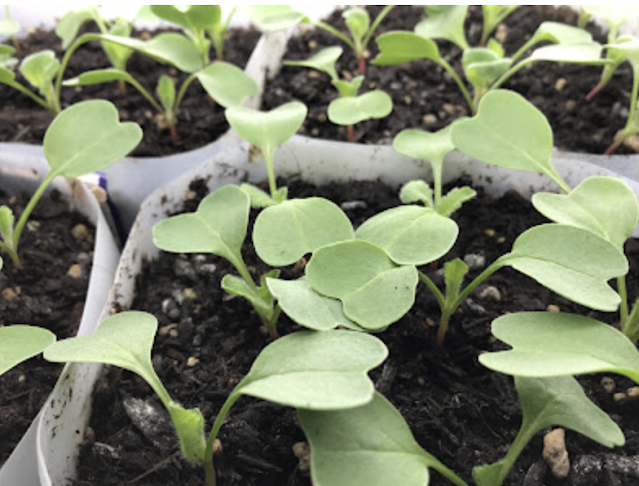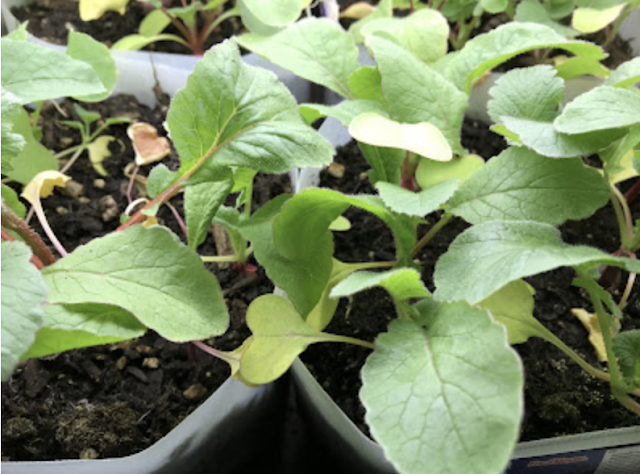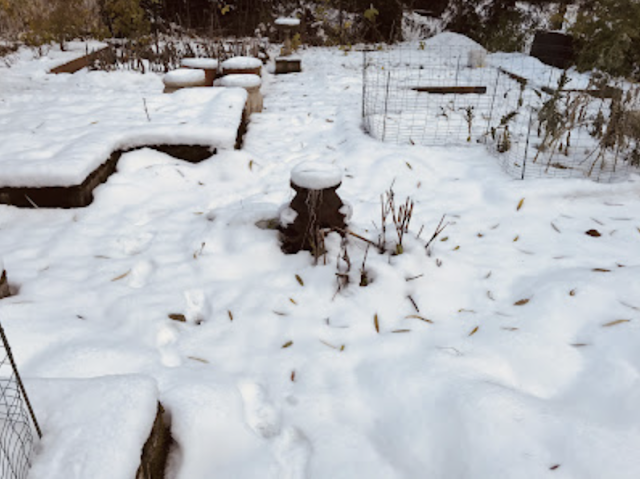I injured my back Friday morning and spent the weekend laid up. Today (Monday) was the first day I was up and working for any length of time since Thursday evening. I hope I didn't overdo it today. I really needed to get some kitchen stuff done and needed to feel I was being effective. And it seems that my family needs me.
So for today, I cooked up 1 more carving pumpkin (3 down, 1 to go of those pumpkins), made a batch of hummus, boiled some eggs, started some sprouts, cleaned up my indoor garden area, and made dinner. When I said my family seems to need me, I think they largely missed my cooking. They could see and talk with me whenever they wanted while I was laid up, but I couldn't do much in the way of food prep for 3 days. Today's focus needed to be on food, in one way or another.
Last Thursday, I worked in my light garden area, harvesting more radish greens and cleaning out 1 flat of radish plants to start new radish seeds. My light garden is a set-up of 4 trays with pots under 4 sets of grow lights. As I've mentioned before, I use the bottom halves of gallon milk jugs for my grow containers. These are free and slightly squared, so less space is wasted in the tray.
Instead of complaining about my back and the subsequent catch-up work, I thought I'd share the growth cycle of a tray of radish plants.
 |
I begin with containers filled with potting soil, poke holes in the surface and plant my seeds and push soil over to cover. |
 |
| After about 5 days, the seedlings are up. |
 |
| 2 weeks later, the secondary leaves develop. |
 |
| Weeks 3, 4 and 5 yield lots of leaves to use in salads, soups, and stir-fries. |
 |
| Although I grow radishes indoors for the leaves, we also get some roots to use in salads. |
 |
| By the end of week 5 or into week 6, the plants looks like they've seen better days. |
 |
| At this point, I harvest all of the edible-looking leaves to use in meals. |
 |
| I scoop out the remains of the plants and about the top 1-2 inches of soil from the containers and add to the compost pile. |
 |
| I then add some fertilizer and top off the soil, so I can begin a new batch of radish seeds. |



